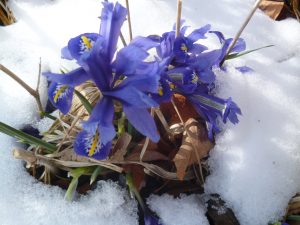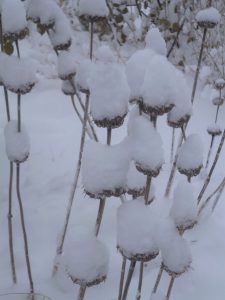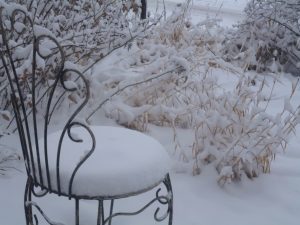
I don’t know about you, but I’ve had to forego some of my morning rituals to make time to reap the bounty from my garden these last couple of weeks. I fully expected the temperatures in the 90s and occasional triple digits to stall the production of my tomatoes, but somehow the blossom-drop and lack of fruit-set experienced in previous very hot summers never materialized, and now I’m bringing in armloads every few days! And how about them eggplants! Swiss Chard, Collards and Kale abound, and my Tromboncino climbing Zucchini is feeding the neighborhood.
I have two new tomato varieties to add to my list of top favorites: Tidy Treats and Tasmanian Chocolate (I’m a sucker for anything with chocolate in the name or ingredients list).

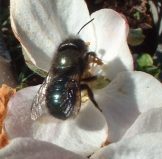 Mason Bee populations plummeted throughout Boulder County due to harsh spring weather, so it’s especially important to coddle them this winter! Mason bees normally nest in holes in tree trunks, which offer stable temperature, moisture, and protection from predators. To provide extra assistance, bring your Mason and other native bee tubes/cocoons into a sheltered place with ambient (outdoor) temperatures, but with less fluctuation, like a garage or refrigerator. Cocooned bees are now adult and safe to handle in their cocoons. If you used liners or reeds, take them out of the guard tubes and shelters and store them in the fridge. Ideally, unwrap the liners/reeds and just overwinter the mason bee cocoons. Place them in a Humidi-bee chamber (in stock), and keep the lower pad moist.
Mason Bee populations plummeted throughout Boulder County due to harsh spring weather, so it’s especially important to coddle them this winter! Mason bees normally nest in holes in tree trunks, which offer stable temperature, moisture, and protection from predators. To provide extra assistance, bring your Mason and other native bee tubes/cocoons into a sheltered place with ambient (outdoor) temperatures, but with less fluctuation, like a garage or refrigerator. Cocooned bees are now adult and safe to handle in their cocoons. If you used liners or reeds, take them out of the guard tubes and shelters and store them in the fridge. Ideally, unwrap the liners/reeds and just overwinter the mason bee cocoons. Place them in a Humidi-bee chamber (in stock), and keep the lower pad moist.  We’re excited that the City of Boulder is gathering feedback from the community about how we use our yards, preferences for landscaping and interest in a citywide effort to create pollinator habitat patches and pathways. Pollinator pathways connect safe, pesticide-free native plant patches of habitat for bees, birds, butterflies, and other wildlife to provide food and nesting sites. Native pollinators are vital to our ecosystems and pathways support pollinator populations, as well as safe passage for movement across the city.
We’re excited that the City of Boulder is gathering feedback from the community about how we use our yards, preferences for landscaping and interest in a citywide effort to create pollinator habitat patches and pathways. Pollinator pathways connect safe, pesticide-free native plant patches of habitat for bees, birds, butterflies, and other wildlife to provide food and nesting sites. Native pollinators are vital to our ecosystems and pathways support pollinator populations, as well as safe passage for movement across the city.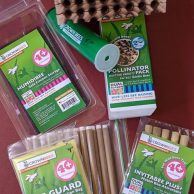
 Our
Our 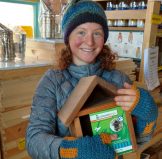 If you were lucky enough to get any mason bees nesting this spring, you’ll want to coddle them through the winter. Their populations are down throughout Boulder County because of the weather, and Tom Theobald, our usual supplier, isn’t even sure whether he’ll have any for sale next spring.
If you were lucky enough to get any mason bees nesting this spring, you’ll want to coddle them through the winter. Their populations are down throughout Boulder County because of the weather, and Tom Theobald, our usual supplier, isn’t even sure whether he’ll have any for sale next spring.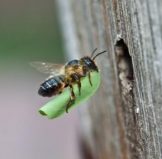 You can do the same with leaf cutter bees but handle them very carefully as they aren’t yet mature. Our supplier, Crown Bees, will be
You can do the same with leaf cutter bees but handle them very carefully as they aren’t yet mature. Our supplier, Crown Bees, will be 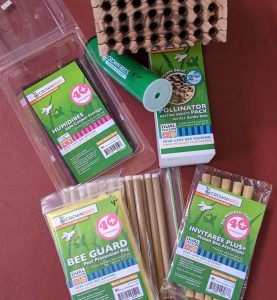
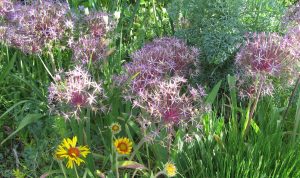
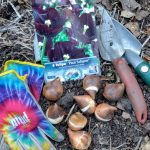


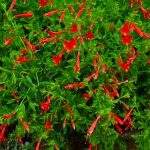
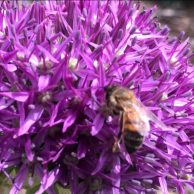 Pollinator week is a special time for Harlequin’s Gardens – a time when we can celebrate the hard-work of bees (honeybees, solitary bees, bumblebees) wasps, ants, flies and bee flies, butterflies and moths, beetles, some bats and birds, and some mammals. They’re all around us, connecting the dots between flowers and food.
Pollinator week is a special time for Harlequin’s Gardens – a time when we can celebrate the hard-work of bees (honeybees, solitary bees, bumblebees) wasps, ants, flies and bee flies, butterflies and moths, beetles, some bats and birds, and some mammals. They’re all around us, connecting the dots between flowers and food.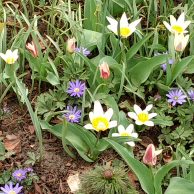 A couple of days ago, I decided to trim back the clumps of Narbonne Flax in my garden, which had been bent over by the heavy snow in March. I grabbed my hedge clippers and cut the first clump down to about 8”. Then I took a closer look at it. Something was in there, and it wasn’t a wad of dry redbud leaves. I had just missed cutting through a Praying Mantis egg case by about a quarter of an inch! A little shaken and much relieved, I inspected all the other clumps carefully before trimming the rest.
A couple of days ago, I decided to trim back the clumps of Narbonne Flax in my garden, which had been bent over by the heavy snow in March. I grabbed my hedge clippers and cut the first clump down to about 8”. Then I took a closer look at it. Something was in there, and it wasn’t a wad of dry redbud leaves. I had just missed cutting through a Praying Mantis egg case by about a quarter of an inch! A little shaken and much relieved, I inspected all the other clumps carefully before trimming the rest.

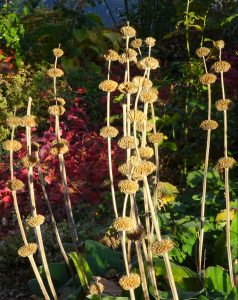
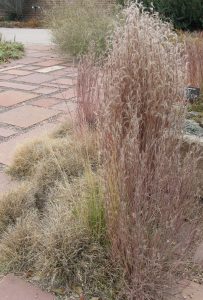 Unless you have an ‘ornamental’ grass that self-sows aggressively, leave grasses and their seedheads standing. If they are ‘cool-season’ grasses, you’ll want to leave them until about mid-February, then cut them to 3” above the ground so they can begin making unimpeded new growth as soon as the soil thaws. Dormant ‘warm-season’ grasses can remain attractive until warm weather comes and don’t need to be cut down until April.
Unless you have an ‘ornamental’ grass that self-sows aggressively, leave grasses and their seedheads standing. If they are ‘cool-season’ grasses, you’ll want to leave them until about mid-February, then cut them to 3” above the ground so they can begin making unimpeded new growth as soon as the soil thaws. Dormant ‘warm-season’ grasses can remain attractive until warm weather comes and don’t need to be cut down until April.